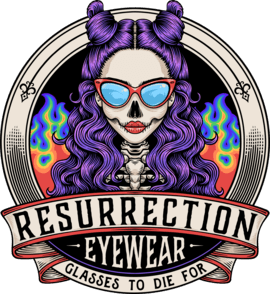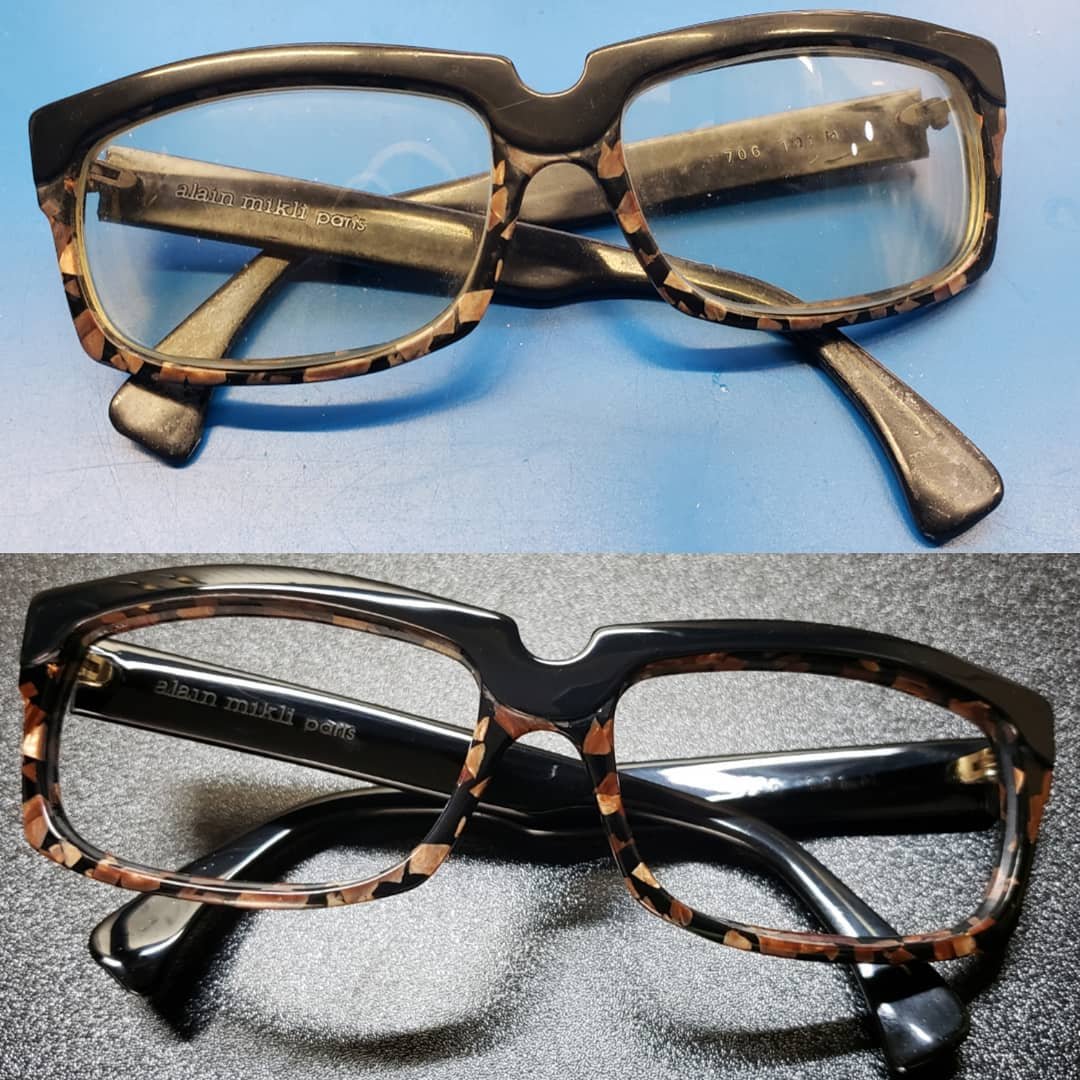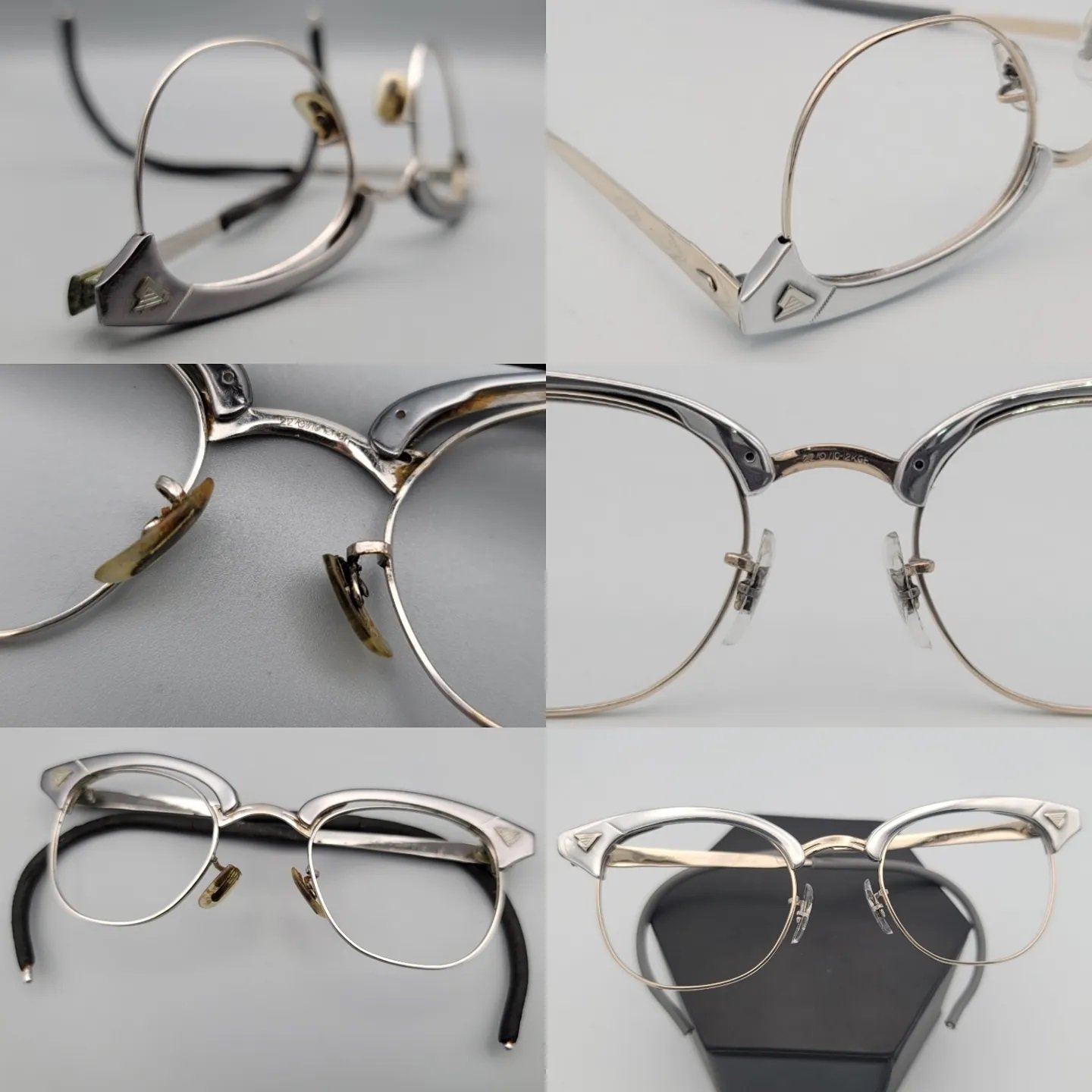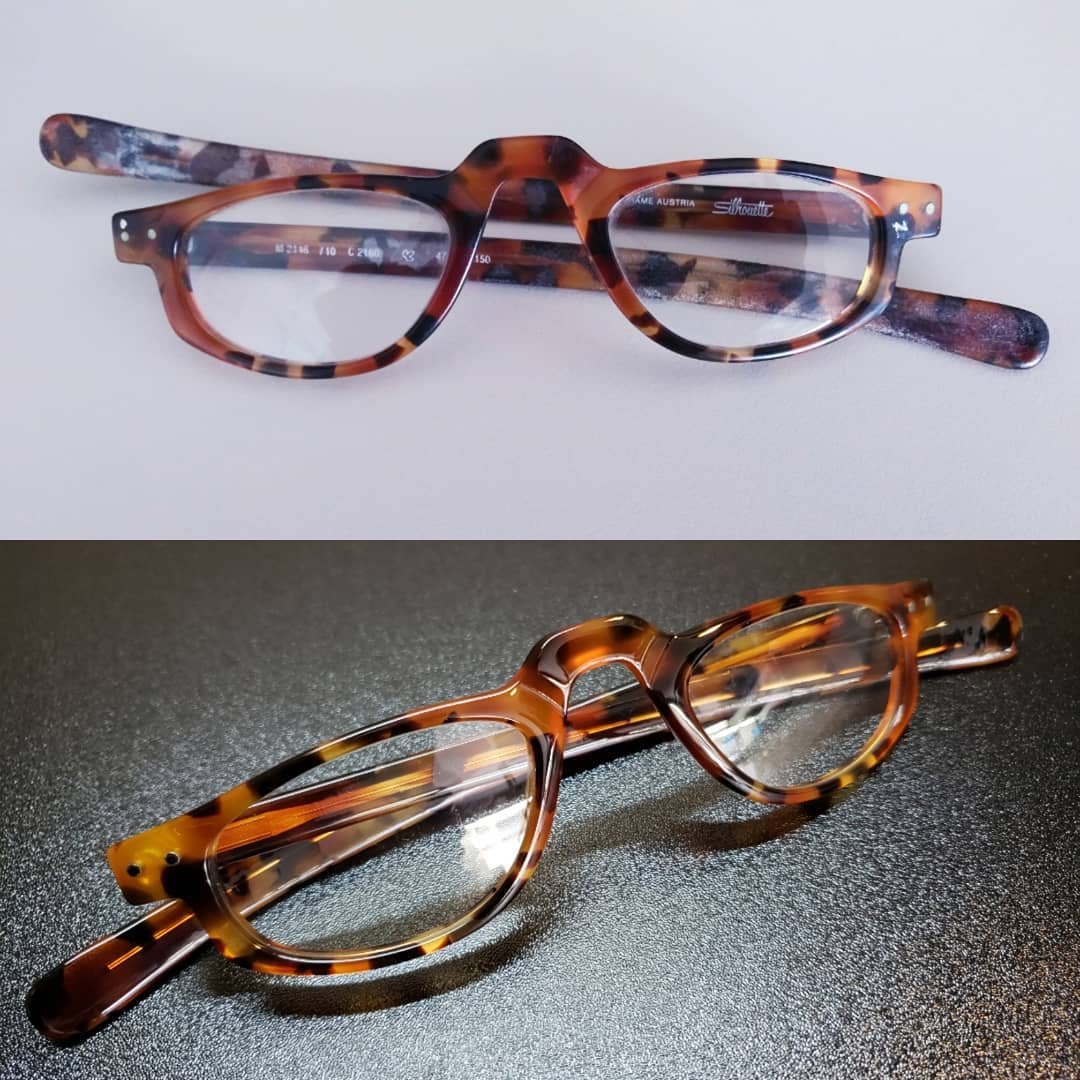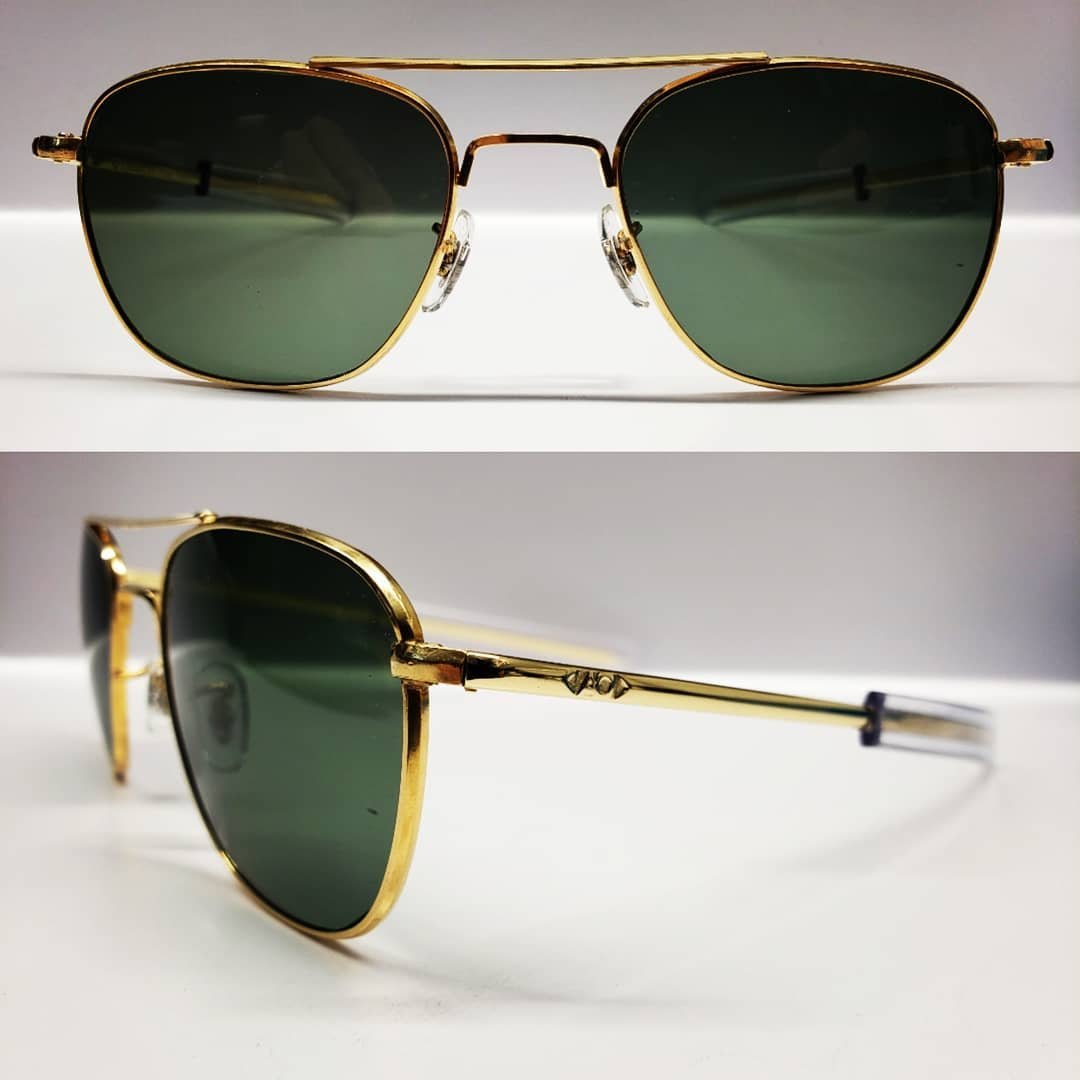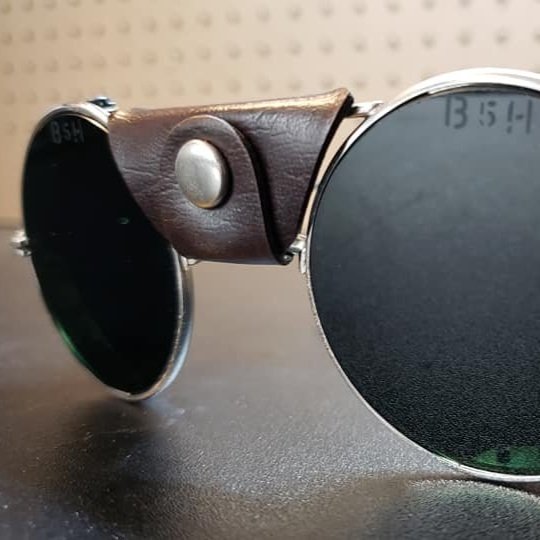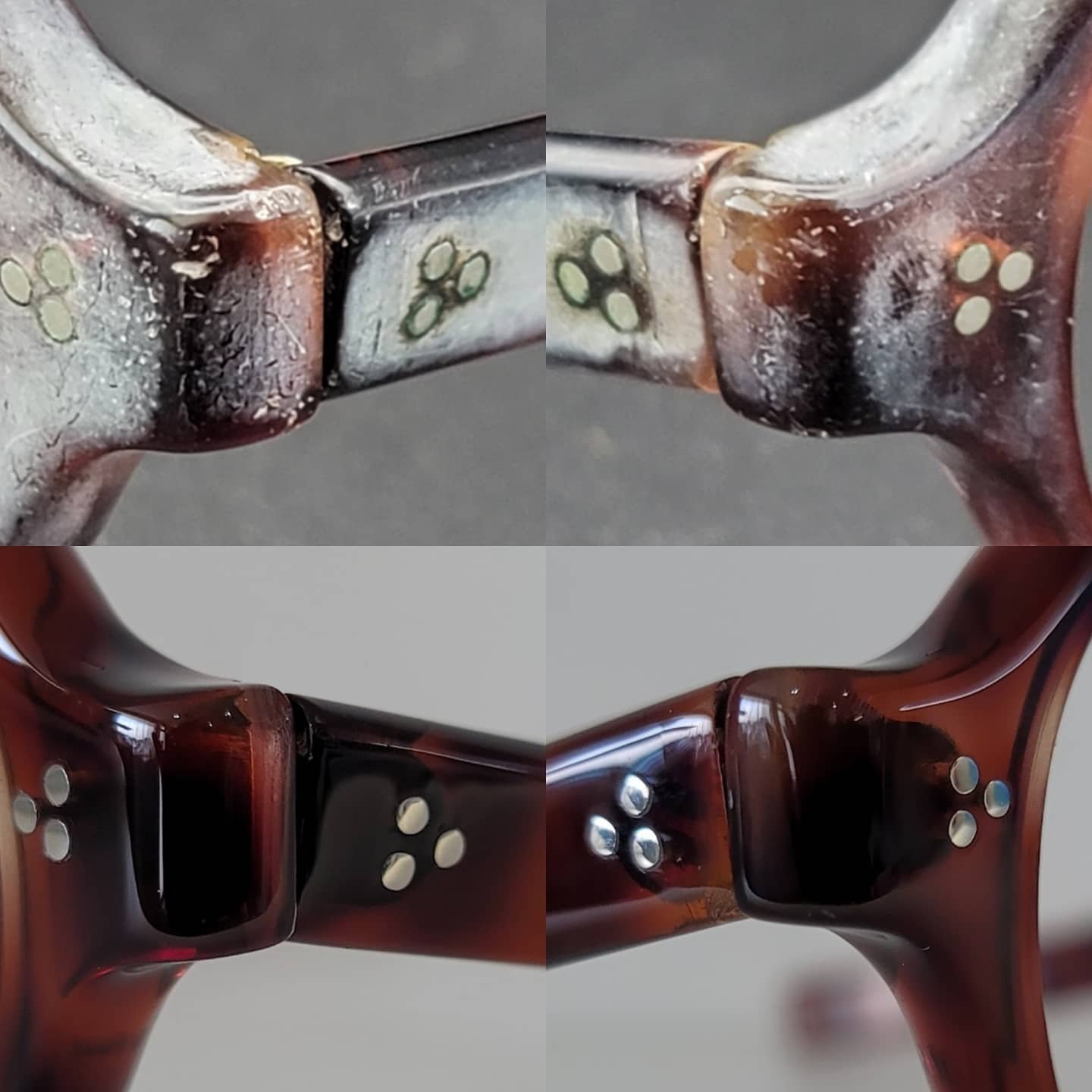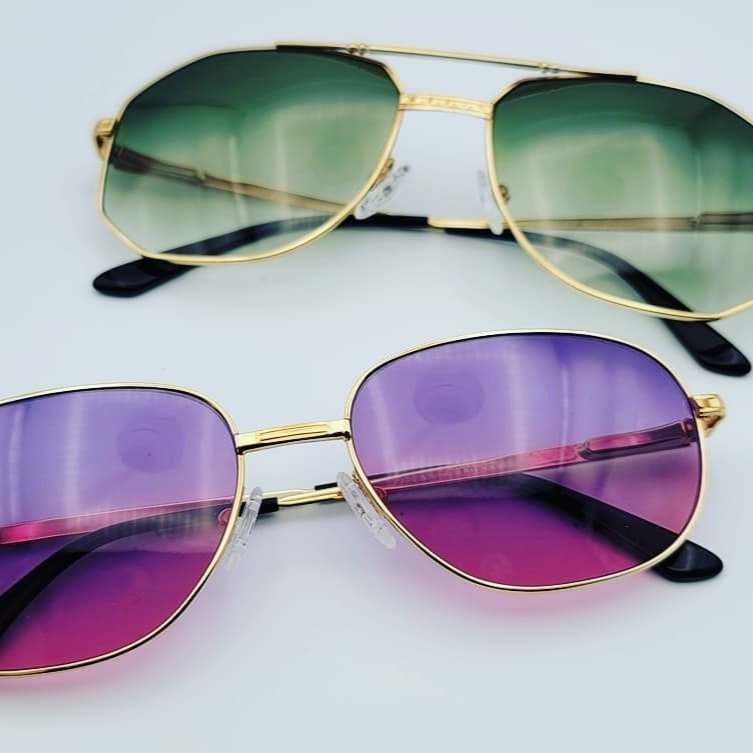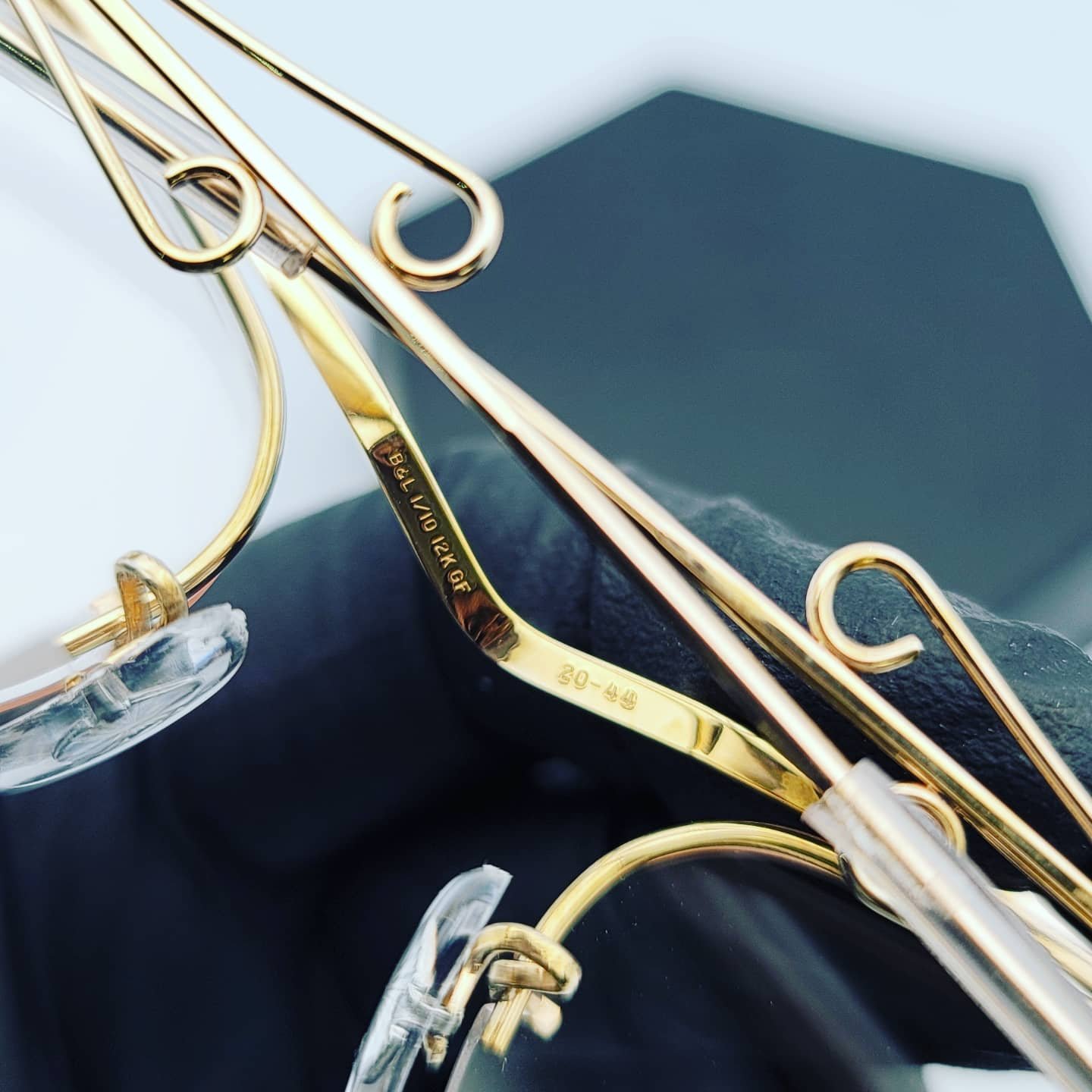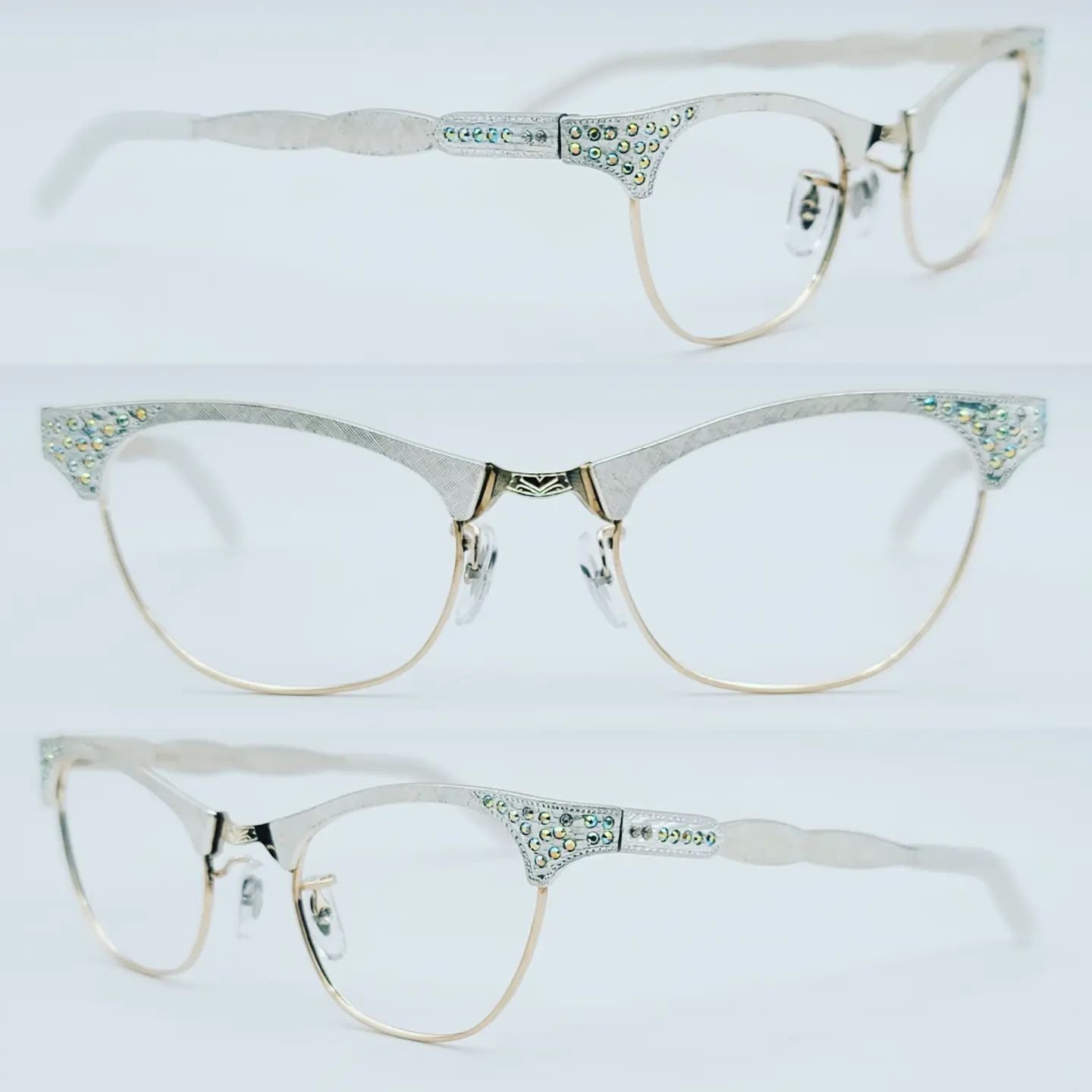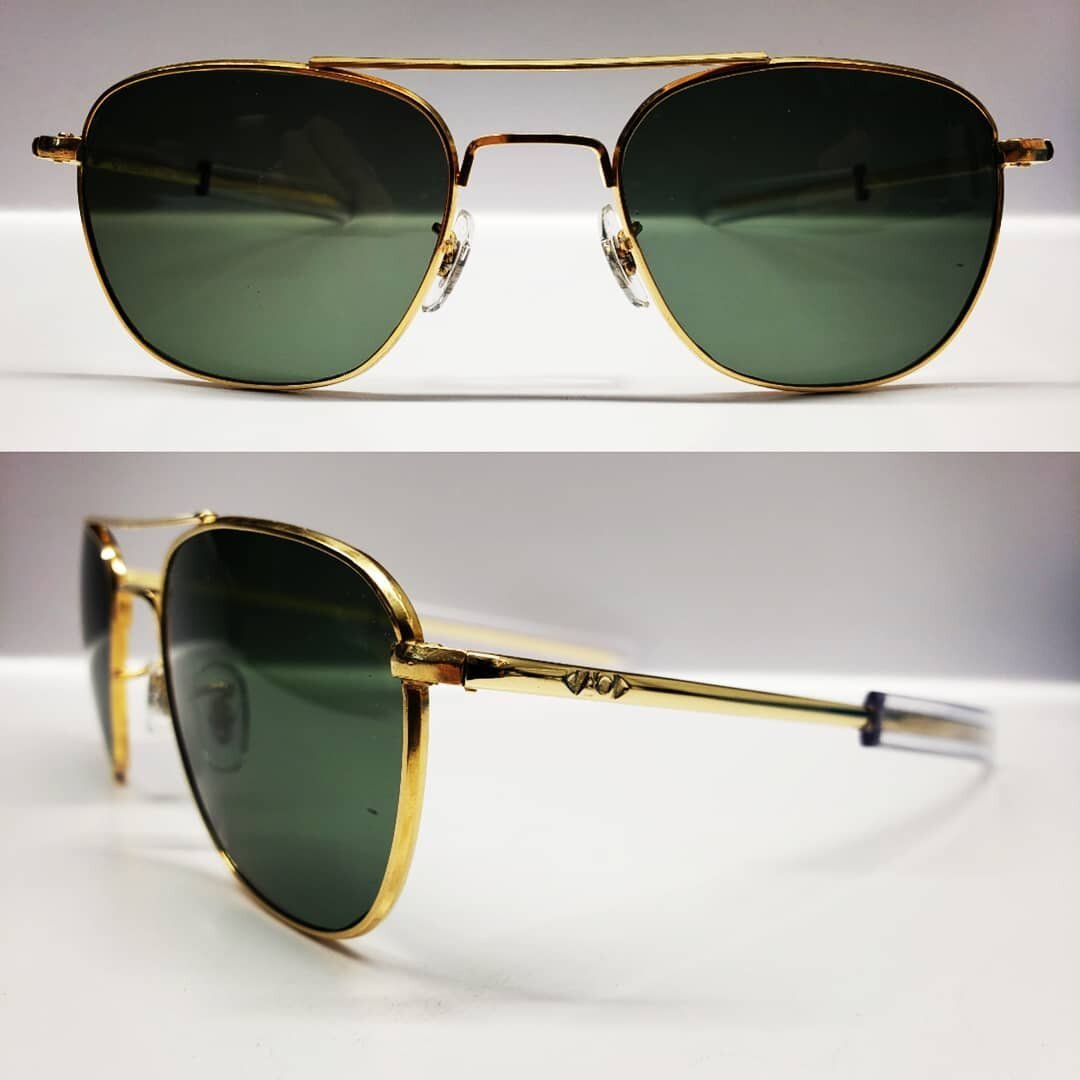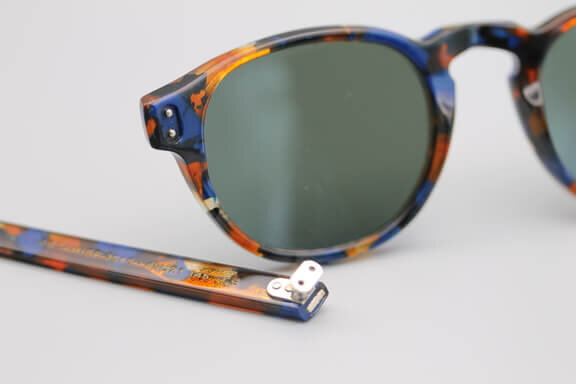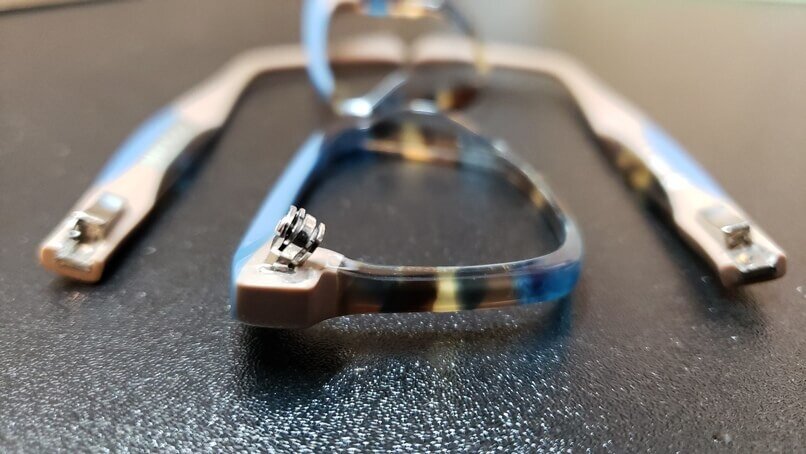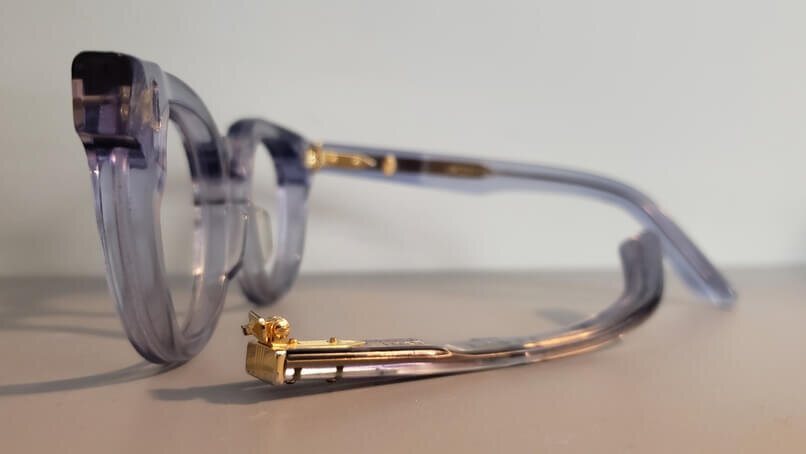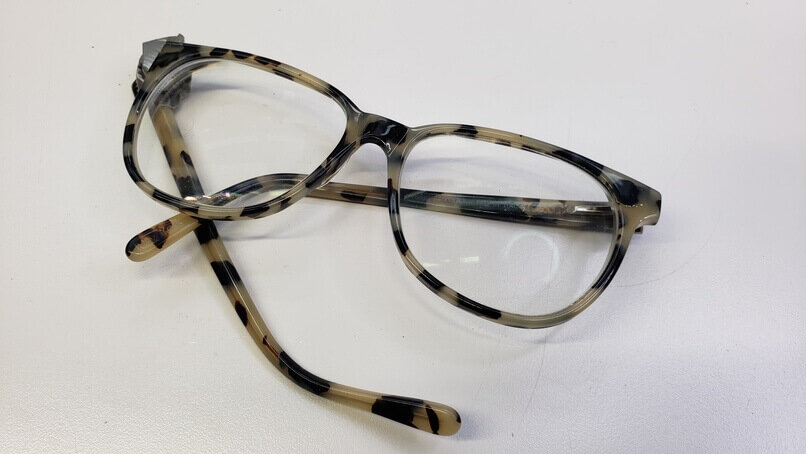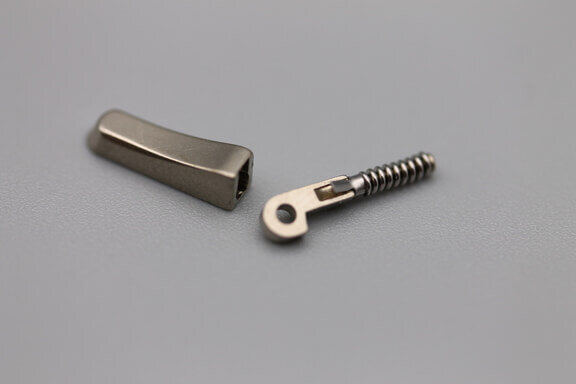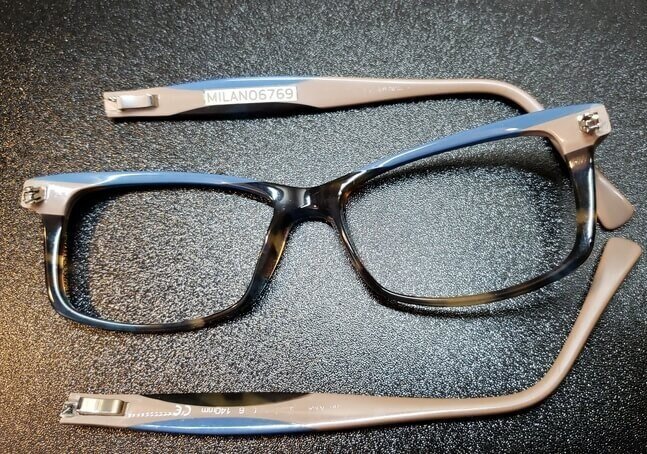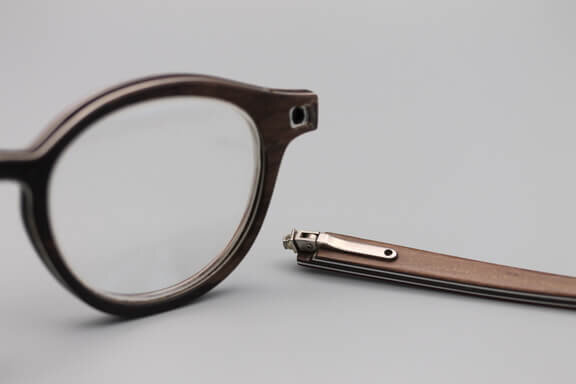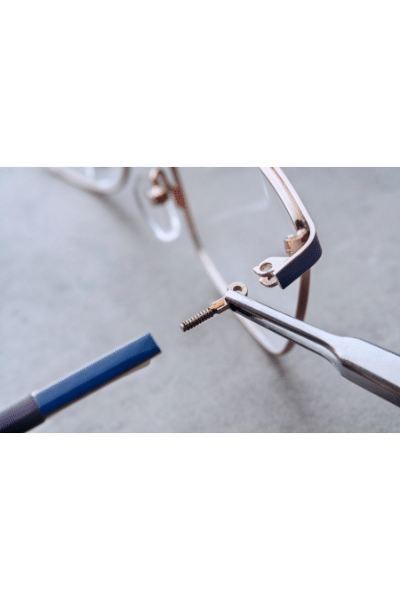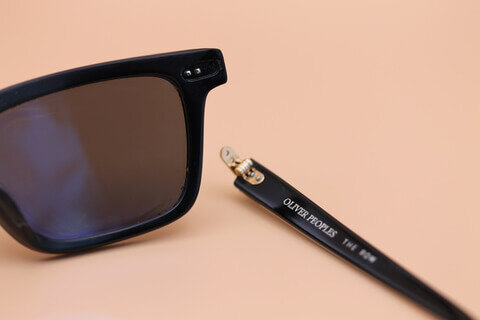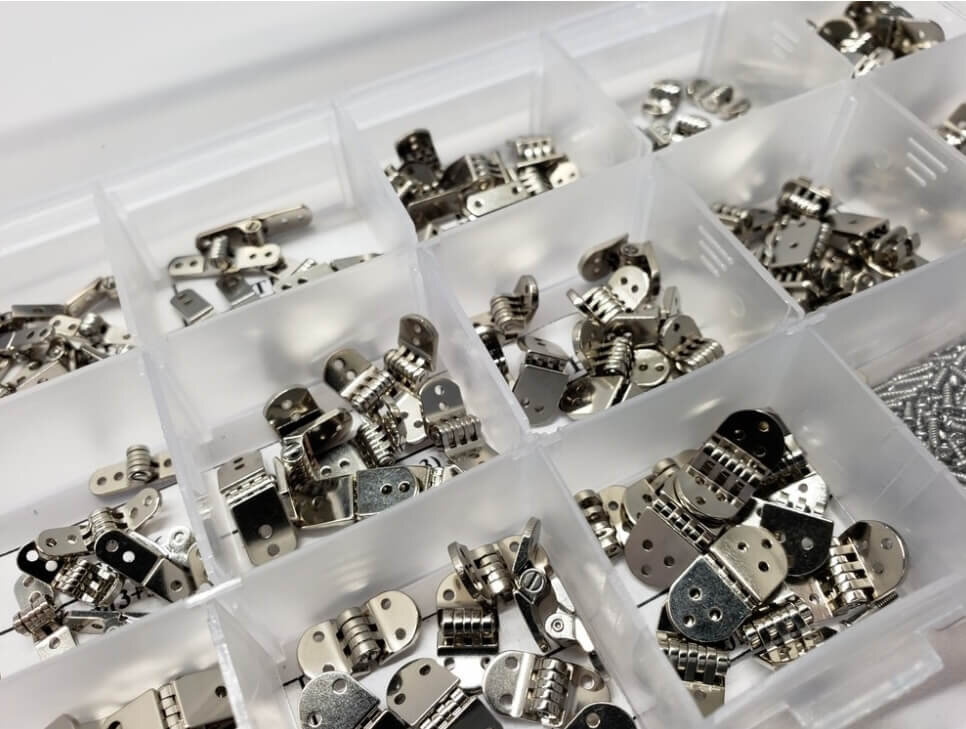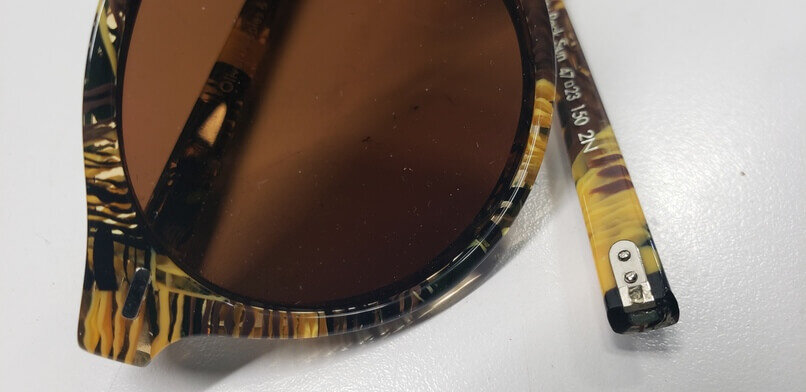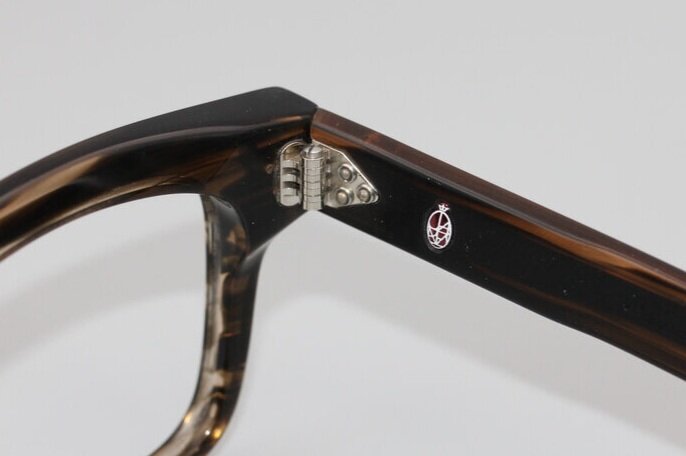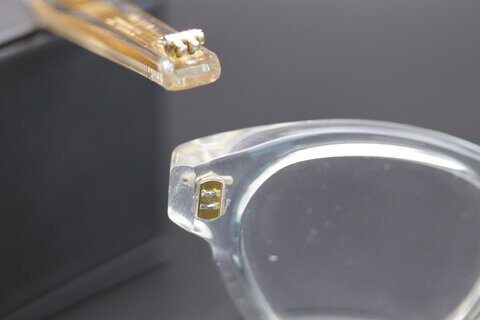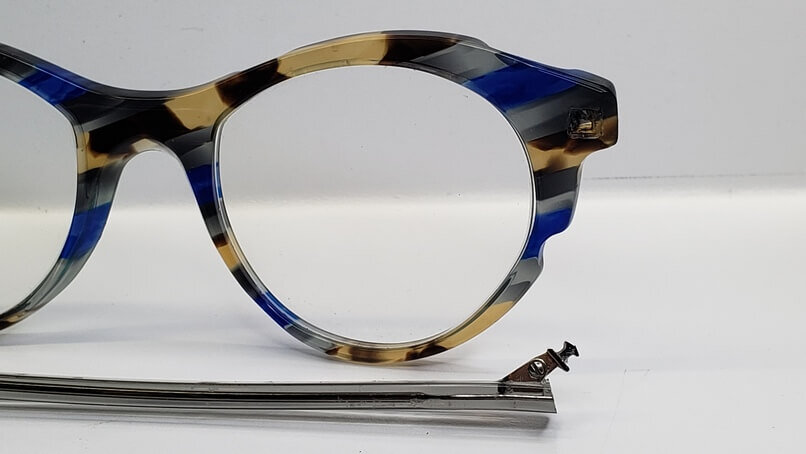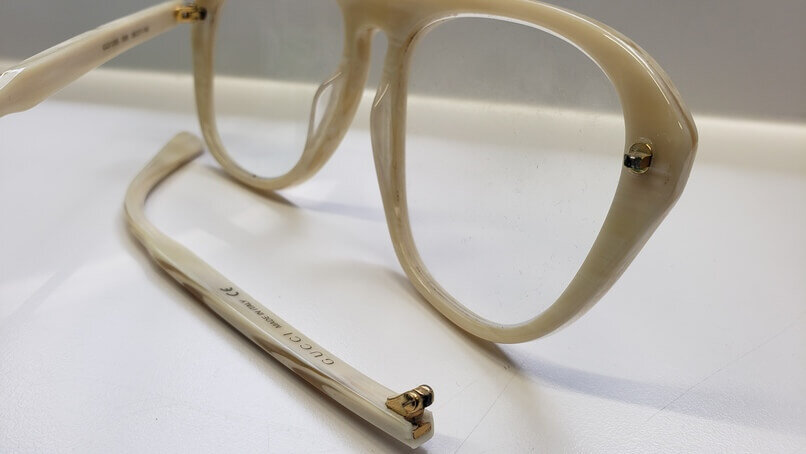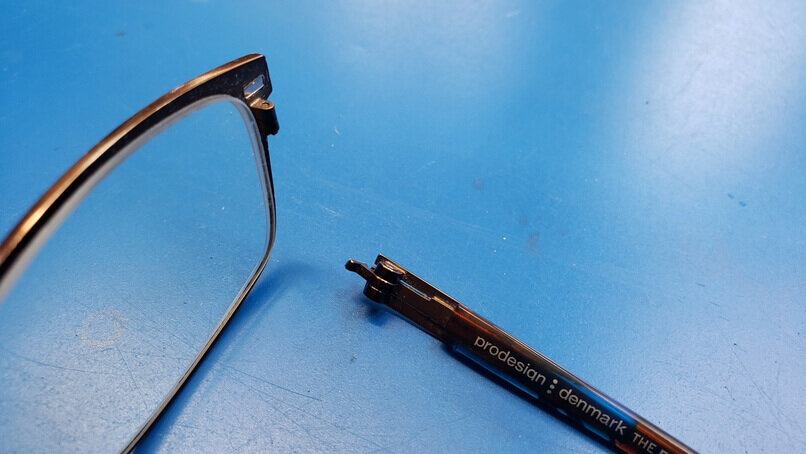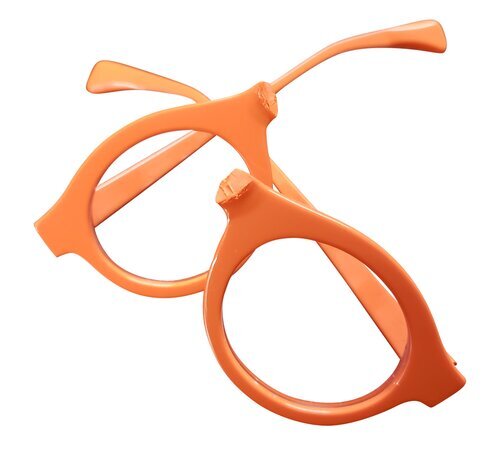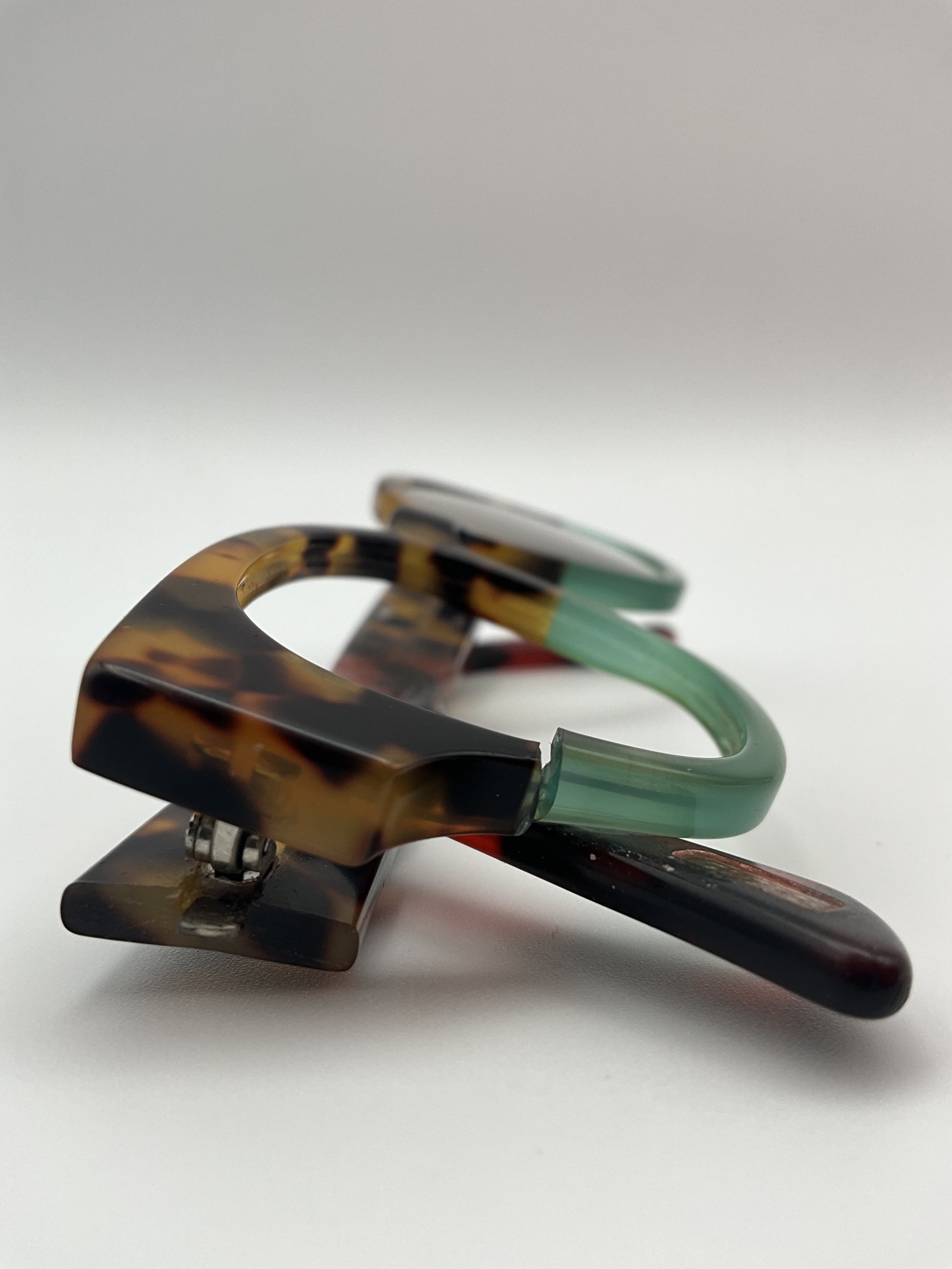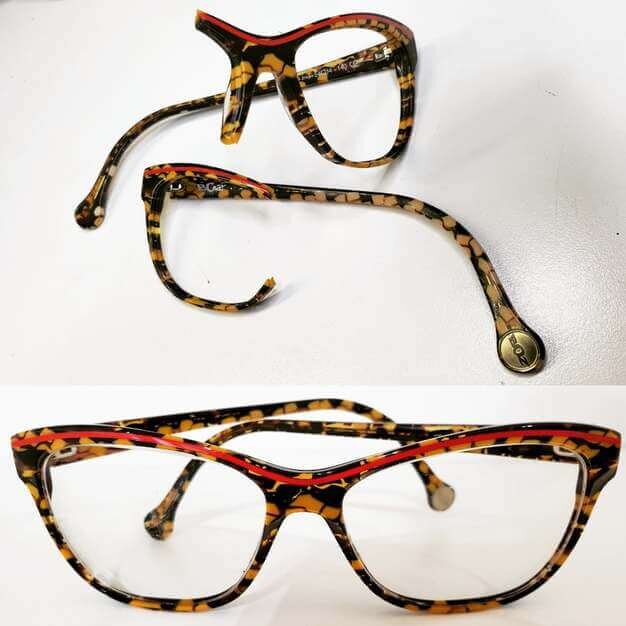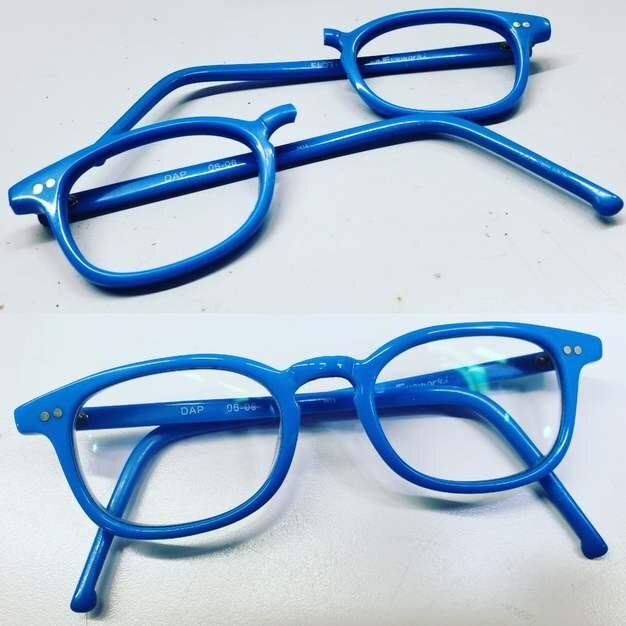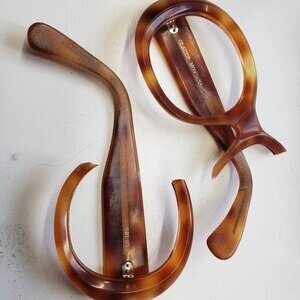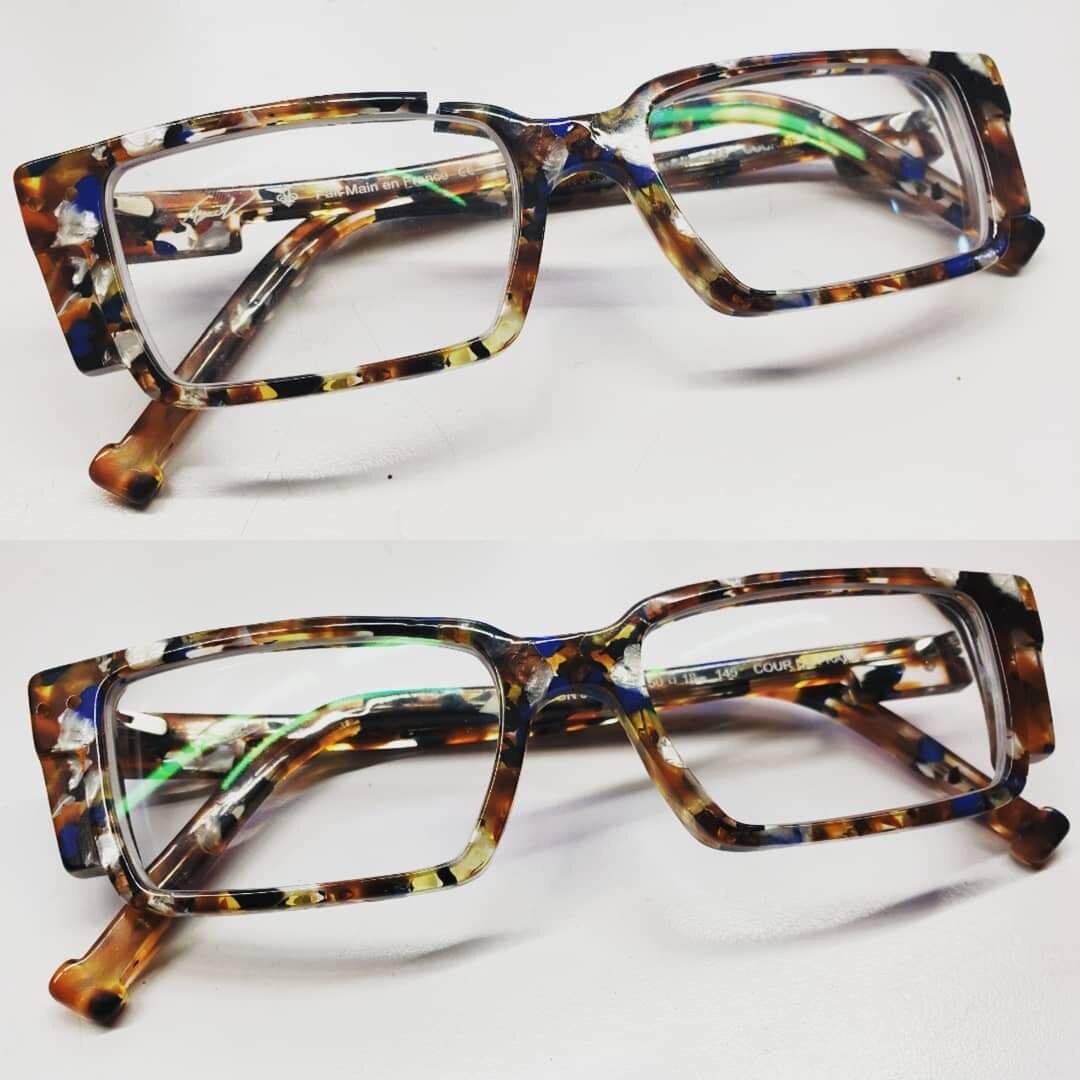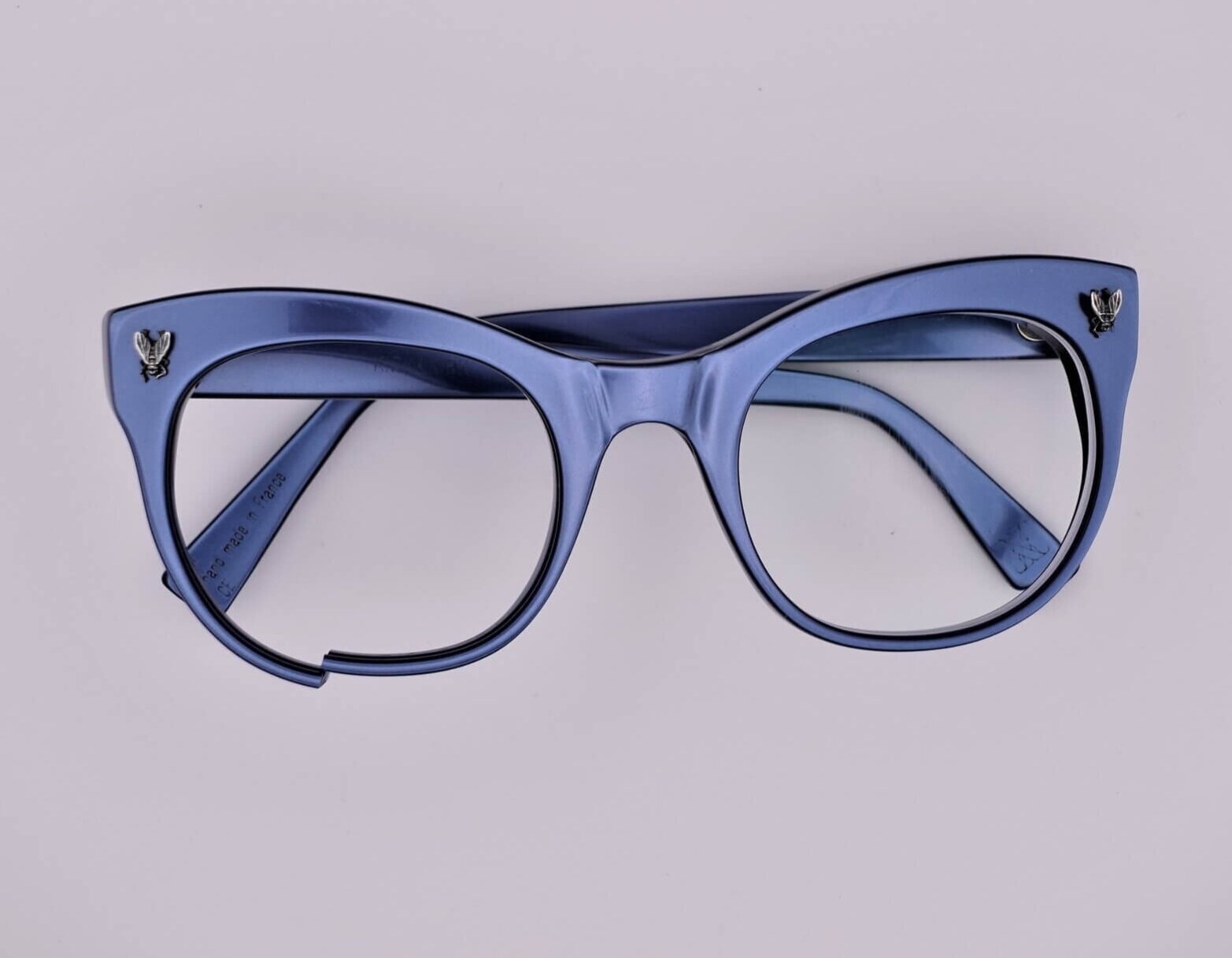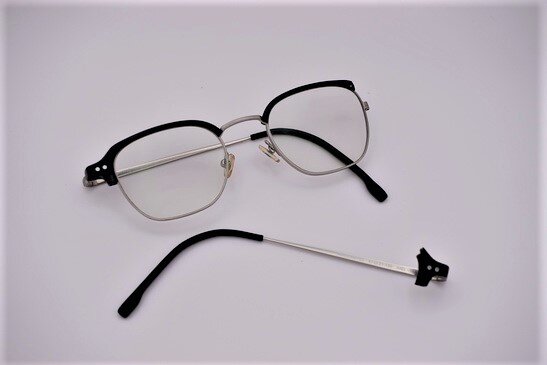
Eyeglass Discussions
The Scoop About Vintage
Glasses are not made like they used to be—I should correct myself, most glasses are not made like they used to be. In our current era the majority of recognizable brands are produced in such high quantity they have lost much of the quality that they once had. The craftsmanship and structural integrity is often sacrificed for cost and volume. Many modern frames are not made to last, the manufacturers would much rather you purchase another frame sooner than later. Sadly, the brands currently creating solid, hand crafted, gorgeous pieces are ones the general public are typically unaware of. High quality frames from the past were made SO well that even after decades, they can be restored back to a beautiful, truly one of a kind frames. This form of restoration is sustainable and extremely rewarding.
The fabulous feedback from clients who are able to wear the frames their grandparents, parents or loved ones once wore is extremely fulfilling. People also stumble upon amazing, vintage frames at estate sales, antique markets and even thrift stores. Some of our favorite clients are senior military members, we have the honor of restoring their sentimental frames to their former glory. When holding a frame in your hands that was worn in battle or in service, it brings a whole new feeling to the work. We have had the pleasure of doing many commemorative pieces and each one touches our heart. We can provide a traditional restoration or do a complete revamp of what once was. That decision is always up to our clients and what their vision is for the end result. We work on ALL frames, from antique to present day. Our favorite are always the vintage though. They have a certain classic look and feel to them that speak of a different time, where things were made to last and not made to be disposable.
Replacing the lenses truly completes a proper restoration. They can be replaced with real glass when applicable, the standard material for the period, which is highly rewarding. They can also be fit with lenses that are completely different than what would have been available at the time, with all the benefits of modern lens technologies. Every frame that comes to our shop is given a thorough assessment, then the client is given the recommendations for repair/restoration and can choose what they would like performed.
Fun fact!
A misnomer in regards to vintage eyewear is the term “gold filled”. It does not mean that the frames are literally filled with gold!
Vintage frames that are “gold filled” have markings indicating such. In order to be considered “gold filled” the frame must be coated with at least 5% or 1/20 of its total weight in gold. Hence the markings that read 1/10 12K GF, etc. Gold filled frames can still have the gold wear down over time causing thinning or complete removal all together. During restorations it’s common to first high luster polish then apply a new gold plating in cases where the original gold has been worn away.
In closing , there is something to be said about multi-barrel hinges, good quality acetate and gold plated/filled metals! If you want a fashionable, well-made, unique pair of eyewear, don’t count vintage eyewear out!
It's the Little Things - General Frame Maintenance
Often times it’s the little things can get overlooked in our day to day lives. Here are a few tips on how you can make a huge impact on your frames overall look and feel. Routine maintenance on your eyewear can make a world of difference. Sometimes frames just need a cleaning and a minor face lift with the changing out of a few key pieces of hardware.
The maintenance checklist includes various things such as a deep cleaning, changing the old dirty nosepads, temple tips and even screws when applicable. After months and years of wear most eyeglasses are also in dire need of a proper adjustment. It is a good idea to have your glasses adjusted periodically by an Optician so they fit comfortably and don’t fall of your face! Even if you haven’t had a dramatic incident occur, your frames can get out of shape from just the normal wear and tear of everyday life. Taking them on and off, putting them in your shirt, wearing them on your head and so on can stretch them out or tweak them just enough so that they do not fit like they should. Most of us also don’t realize just how dirty our glasses can become after long term wear.
This image illustrates the importance of having your nosepads replaced on a regular basis. You may not even realize they look like this. Often times your nosepads get slippery due to skin oils, makeup, sweat, etc. causing your frames to slide down your nose. Irritation due to bacterial build-up can also be a consideration. Nosepads come in a variety of sizes, materials and styles so they can be replaced with the closest match or a new type. Get rid of those old nasty worn pads and get some fresh new ones!
This beauty went from drab to fab with a little help from the maintenance checklist! Deep cleaning, new nospeads, temple tips and screws. Look at those stones after a thorough cleaning! We also polished them and applied a new 18k gold plating. Such a change!
Broken screws, incorrect screws, poorly mounted nosepads, cracked temple tips, we see it all. A few DIY repairs and a frame often loses its prior glory. You don’t necessarily need a new pair just to maintain the ones you have.
Temple tips can become discolored, cracked and just generally gunky. Luckily they can be replaced so there is no need to let them even get to this point. The most common replacement temple tip colors are black, brown and clear but there are also some specialty temple tips that come in a variety of colors.
Your eyeglasses deserve some love every now and again. Make sure to take care of your frames and if they need a little extra attention send them our way and we can get them dialed in. We disassemble the frames, give them a nice ultrasonic and/or steam clean, change any worn parts and get them all tightened, adjusted and fresh!
Eyeglass Hinge Repair, the Good the Bad and the Ugly
Eyeglass hinges come in all shapes, sizes and designs. And they all break! Here at Northwest Frame Repair we have seen it all.
Eyeglass hinges come in all shapes, sizes and designs imaginable. They can however be broken down into a few main types in most cases. Rivet, heat sunk, welded and spring hinges. A few brands out there have extremely unique hinge styles such as IC Berlin and Mykita who both use proprietary bent metal hinge designs. There are a handful of other unique one off hinge designs out there, eyeglass designers and engineers seem to enjoy perpetually finding new and more complex ways to hinge the temples on a frame!
Every single one of theses hinge designs has a failure point. We see every possible type of breakage you can imagine. Rivets fail, metal bends and snaps, springs give out and often the whole thing just pulls right out of the frame. Sometimes its from impact, being stepped on, rolled over on in bed, you name it. And of course pets, children and glasses don’t always mix well. We see damage from pets regularly and lets face it, kids are just rough on things.
Spring Hinges
Spring hinges allow the temples to flex open, using a spring mechanism within a chamber on the temple. There are a few different ways various manufacturers go about this but the concept is essentially the same. A spring is compressed as the temple opens beyond its stop point. This can help with comfort for the wearer and provide some protection against breakage as the frame has some “give”. What it does mean however is the piece of metal that actually connects the frame front and the temple is quite small and prone to breakage. In most cases we are able to remove the entire body of the original spring hinge and weld on an entire new spring hinge, thereby making it function again.
Rivet Hinges
A very common and classic hinge type is the rivet hinge. Rivets are inserted through holes in the hinge plate and the frames then pressed to mechanically hold the two together. Though a very effective and strong method they too fail under too much force. Typically the hinge pops off the rivets or the less desirable failure the rivets are pulled through the frame. In either case they are repairable with the correct replacement parts or some good old fashioned customization. Many vintage and high end frames use rivet hinges as they are not only strong but add to the aesthetic of the eyeglasses.
Heat Sunk and Welded Hinges
Heat sunk hinges (also known as hidden hinges) are a type of hinge used on plastic frames where the hinge has a cleat that is heated and melted directly into the frame. This style of hinge is also very common, it also leaves the front of the frame free of any visible hinge components. They do however tend to pull right out of the plastic when they break. Or in some cases the metal breaks leaving the cleat imbedded in the frame. A new cleated hinge is heated and sunk into the frames as a repair in most cases. Many frames will have a combination of heat sunk and rivet hinges.
Welded hinges are the go to on metal frames. Though rivet hinges are also used on metal frames, especially on vintage metal frames, welded hinges are the most common. Welded to the frames during manufacture enables the frame to be coated so the hinge is the same color as the rest of the frame. The barrel of the hinge tends to be the most common breakage, the weld itself being a close second place. Fortunately, a new hinge piece can be welded on and the frame can even be powder coated afterwards if desired.
There are many many more variations of hinges. These are just a sample of what we see and repair daily. Each case is unique and is handled in a different way than the last one. The hinge style and design says a lot about a frames quality. They are not all equal. Each type can be made well and stout and each type can be made cheaply and poorly. A good strong hinge is a major clue as to level of craftsmanship of a particular frame. In the world of eyeglasses you tend to get what you pay for.
Plastic Eyeglass Repair
Learn about our plastic frame mending techniques and what NOT to do!
Plastic eyeglass frame breakages are one of the most common types of repairs we see. The term “plastic” when referring to eyeglass frames is typically a frame material called cellulose acetate or zyl. There are various other materials eyeglasses are manufactured with commonly called “plastic” such as Optyl, SPX, Nylon and other more obscure materials. Though often called “plastic” they are all very unique and have vastly different properties. For this discussion we will be focusing on acetate, though some of the repair techniques can overlap with the various plastics and even wood and horn frames.
Acetate is a great material for eyeglasses as it is very versatile and relatively easy to work with. It can be cut, sanded, drilled, polished and shaped. It comes in a vast array of colors and designs making it ideal for eyeglass designers and manufactures alike. It does however have its limitations and weaknesses. Acetate eyeglasses can be damaged by heat, they can be scratched, damaged by impact and they have a tendency to break when too much force is applied (dogs and cats like to chew on them as well).
The classic DIY repair attempt we see everyday is super glue. DO NOT USE SUPER GLUE!! It simply will not hold and makes a proper repair more difficult. The cleaner the break the better the repair will look. If the break is clean a repair on an opaque frame can be near impossible to find. Super glue must be completely cleaned off the glasses before the repair can proceed. It can also damage the lenses as it’s messy and most people can’t remove and reinstall the lenses.
Super Glue Mess!
This is what a typical DIY super glue repair attempt looks like
Using either industrial grade specialty adhesive or acetone, the breakage is tacked together and stabilized. Using heat a metal splint is then sunk into the breakage. This provides a far stronger connection than any adhesive alone. The acetate melts around the splint, embedding it internally.
Splint Installed
As you can see, the metal splint is melted directly into the frame
The legs of the splint are then cut off and the area is polished to clean up any oddities caused from the breakage. The cleaner the breakage the cleaner the repair. The splint is inserted in the least visible way possible. Each case is unique and each repair is done with the best visible outcome in mind.
After the legs of the splint are removed and the area is cleaned and polished the lenses are installed and the frame is useable once again. Don’t throw away a perfectly good frame because it’s broken, it can be fixed!
Nosepad Adaptions
Improve the fit of your eyeglass frame with a nosepad adaption!
Nosepad adaptions can greatly improve the fit of your frames
We have a variety of nosepad adaption options available in order to achieve the right fit and aesthetic for various face types and style needs
Click on the images below for more details about each type
Not everyone’s facial structure is the same. The bridge fit doesn’t need to be the deciding factor on what eyeglasses you or your client can wear if modifying them is an option.
If acetate/plastic frames do not fit well through the bridge/nasal area then the outcome can be frustrating if not physically uncomfortable for the wearer. The bridge fit is important to ensure that the frames don’t slide down or hurt the nose due to friction or unwanted pressure. It is also important to have the frames sitting properly so that the optical center of the lens is positioned correctly in order for you to see your best through the lenses. This can be especially important for individuals with higher prescriptions.
Sometimes long eyelashes can be a problem when wearing frames without nosepads. The lashes can hit the back surface of the lens causing annoyance when blinking and smudging on the interior of the lens which means constant cleaning is needed. We call this phenomenon “lash crash”. Adjustable nosepad arms can greatly reduce if not eliminate this problem.
If you find that any of the above applies to your frames you may be in need of a nosepad adaption.
There are many options available to customize the bridge fit (as shown above). Typically the existing acetate buildup is removed (unless we are installing flush mount silicone pads), the area is then smoothed out to match the existing finish and the chosen nosepad adaption is installed.
With many styles, sizes and colors available we can make any ill fitting bridge look and feel good!
